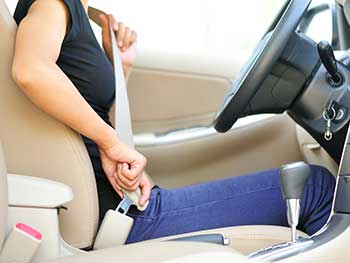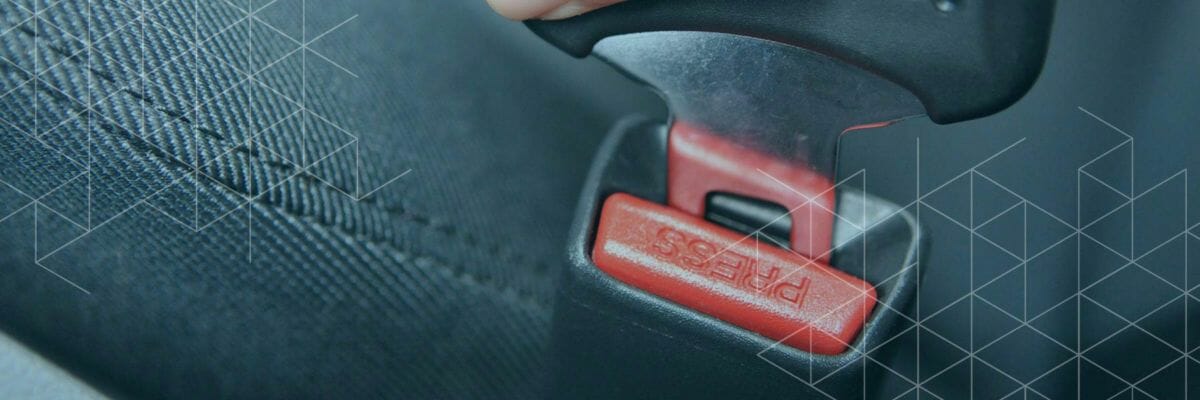Seat Belts: Old But Potentially Injury-Causing Friends
 Seat belts could be considered our oldest passenger-and-driver safety equipment, and are usually seen as our first line of defense against injury in vehicular accidents. The initial seat belt law was federal, going into effect in 1968, so you’d think that safety designers would have had plenty of time to perfect the belts. And yet, seat belts can and do injure people in accidents, nearly 50 years later.
Seat belts could be considered our oldest passenger-and-driver safety equipment, and are usually seen as our first line of defense against injury in vehicular accidents. The initial seat belt law was federal, going into effect in 1968, so you’d think that safety designers would have had plenty of time to perfect the belts. And yet, seat belts can and do injure people in accidents, nearly 50 years later.
Unquestionably, seat belts save lives. Their usage cuts the incidence of serious injury and death in car accidents roughly in half. While air bags provide even more protection, thereby further reducing injuries and deaths, they are no substitute for buckling up. Air bags were never meant to be used without a seat belt, and they do not show the same reduction in injury and death when used without a belt.
However, the many thousands of pounds of force involved in an accident can throw and twist you against seat belts in ways that are damaging. This risk of injury multiplies if you wear the shoulder portion of your belt the wrong way (under your arm or behind your back), or if you have a defective seat belt.
Common Injuries and Hazards
Seat belts have changed over the years. The first ones were called two-point restraints, or lap belts. About a decade after the first lap belts were installed in cars, shoulder harnesses, or three-point restraints, began to show up in cars.
Cars equipped with only lap belt restraints have been known to cause tears and perforations of the small bowel and colon. During an accident, two-point restraints put extreme pressure on the abdomen and thus can cause serious tissue damage, ruptures, and hemorrhage, as well as spinal injuries, which are most commonly horizontal fractures in the lumbar spine. Victims of such accidents may seek assistance from a Baltimore spinal injury attorney to understand their legal rights and potential compensation. While most of the cars with only lap belts were long ago consigned to the junk heap, if you own and drive a “classic car,” you should be aware of the risks of using solitary lap belts. Lap belt injuries can also include facial and head trauma from hitting the steering wheel or dashboard, as the upper part of the body flies forward without restraint.
While the same injuries to the abdomen that occur with lap belts can, and do, happen with shoulder harnesses, many injuries from using shoulder belts, also known as three-point restraints, are to three main areas:
- Thoracic (chest) injuries, including fractures of the sternum (breastbone) and ribs
- Shoulder injuries, including contusions, joint damage, and fractures of the clavicles
- Neck injuries, including to the larynx, carotid and subclavian arteries, and the cervical spine, including neck fractures.
Minor injuries can also occur, such as abrasions and contusions to various parts of the upper body, including arms if they are bare. Additionally, if you are wearing your shoulder belt incorrectly (that is, not across your chest), or if the belt is loose or defective, you can also suffer head trauma from the upper part of your body and your head jerking forward, striking anything in its path.
Problematic Symptoms Post-Accident
“Seatbelt syndrome” describes the patterns of injury to internal organs due to forces exerted in the accident on various portions of your torso and neck. If you have been in a serious accident and are still suffering, you should be on the lookout for the following symptoms, as they could indicate undiagnosed serious damage:
- Persistent abdominal or stomach pain, which could indicate kidney damage or other damage to the intestines or colon
- Blood in your urine or stools (or any unusual bleeding)
- Weakness in your legs
- Persistent pain or stiffness in your chest or neck
- Breathing difficulties
- Extreme, sudden pain of any kind, but especially in your chest or abdomen, which could indicate an aortic dissection or even a heart attack
- Other sudden symptoms, such as vomiting (especially if bloody), dizziness or fainting, severe headache, or inability to move normally.
When the Seat Belt Is at Fault
The National Highway Transportation Safety Administration has investigated and addressed a number of problems over the years involving seat belt problems or defects. The defects can range from seat belts that don’t fasten properly, meaning they are no protection at all in an accident, to belts that fit improperly or loosely, which can create injuries similar to the ones mentioned above. Examples of these kinds of faulty belts include those with defective tensioners, meaning the belt does not fit snugly enough to prevent unnecessary movement during an accident.
Sometimes a suit can be brought on the basis of design defects, or not having enough seatbelts installed in a vehicle. Such claims can be fairly complex, so it is advisable to have experienced legal assistance on your side.
How Can “The Injury Lawyer” Help You?
If you have been injured in an auto accident due to a seat belt, call Baltimore personal injury attorney Steve Heisler. Why? Because Steve loves to help people. He determined nearly twenty years ago that his education and experience could best be put to use advocating for the rights of folks who were harmed through the negligent actions of others.
Keep in mind, however, that there is a statute of limitations – or a time limit – in Maryland for filing personal injury claims. If you have been injured in a car accident arising from defective parts, you should not delay. Consider reaching out to a
car accident lawyer in Maryland like The Law Offices of Steven H. Heisler at (855) 396-2637, or through their online contact form, to schedule a no-obligation, no-fee initial consultation. They can help navigate the intricacies of your case and ensure you pursue all available avenues for compensation.

Attorney Steve Heisler
Steve Heisler decided in 1996 that he was going to focus his law practice exclusively on injury cases. Since then, he has been representing injured people against insurance companies, disreputable medical practitioners and Big Pharma, and doing it with compassion, honesty and level-headed rationality. [ Attorney Bio ]


